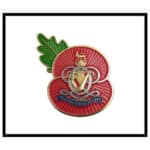Nederrijn
This Battle, in which VIII, XII, XXX and I Airborne Corps took part, was fought to obtain a springboard beyond the Rhine from which to attack the Rhur. A carpet of airborne troops was laid across the waterways on the axis chosen, up which ground forces advanced at speed, while further ground forces widened the corridor. Opposition was stronger than expected, and the weather was worse; these imposed delays. A bridgehead was gained over the Waal, but the north bank of the Nederrijn could not be held.
The Honour has been awarded to the 8th Hussars.
Best
In this subsidiary Engagement, repeated attacks were made by the 15th Division on the strong enemy positions here, but not until 27th September could they be dislodged.
The Honour has been awarded to the 8th Hussars.
Lower Maas
In this Action, XII Corps and I Corps advanced respectively from the east and south of the Lower Mass. The Germans fought stubbornly to oppose this advance at Schijndel, s’Hertogenbosch, Loon op Zand, River Mark, Welberg, Moerdijk, and many other points.
The Honour was emblazoned by the 8th Hussars.
Detail
Although the port of Antwerp was in Allied hands it could not be used as long as the Germans dominated its approaches.
At first, the Regiment and 7th Armoured Division operated in the vicinity of Antwerp itself but when the airborne attacks on Eindhoven, Nijmegen and Arnhem were made they moved into Holland through Eindhoven to St Oodenrode.
The airborne operation ‘Market Garden’ proved too ambitious, and with the failure of the 21st Army Group to relieve the besieged forces of Arnhem, the chance of crossing the Rhine in 1944 was lost.
The task of clearing the Germans from Holland continued and the Regiment suffered more casualties.
Finally, after many small fierce engagements during October and November the country through s’Hertogenbosch and Pilburg along the south bank of the Maas was cleared of the enemy and the Port of Antwerp could, at last, be used.



